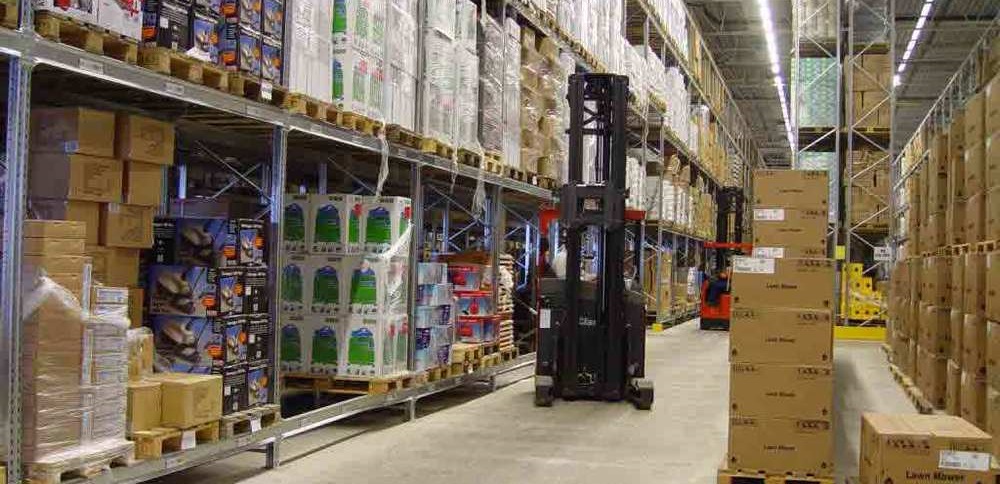What Exactly Is the Meaning Of Liquidating Inventory?

Winding down a business is a straightforward process. The company notifies its employees, its vendors, its creditors and its customers that it is closing up shop.When a company has too much debt it may try to sell excess merchandise and liquidate inventory or other closeouts to generate additional cash. Sometimes this works, but if the business continues to suffer it may have to contact liquidation companies that liquidate inventory completely and shut down the distribution center. They may have to close their own warehouse or shut down a 3PL warehouse, but in either case they have to get rid of all the old inventory. It pays its taxes and fulfills its contractual obligations. It liquidates its inventory and other assets by selling them off quickly, often for less money than the company originally paid for the items.
A business has several options from which to choose when it comes time to liquidate inventory. It can use the distribution channels it has always used to sell excess merchandise, with prices slashed so low that customers can't resist them. The company may get more money for its inventory this way, but it may takelonger to sell the products and receive payment. As an alternative, it can sell its entire inventory to a liquidator, who buys closeouts and will pay a lower price for the products but will take possession of them and pay for them immediately. From a buyer's point of view, an inventory liquidation sale can provide a valuable opportunity to purchase goods at rock-bottom prices. However, liquidators can be picky about the merchandise they buy. Liquidation companies often avoid purchases of perishable or trendy goods that must be resold right away. They also stay away from products that are expensive to ship and to store. Instead, liquidators prefer to buy easy-to-move products with a long shelf life, such as power tools, books, toys and building materials. Closeout brokers may have a little more flexibility because their business model would be to sell your closeouts without taking actual possession. They may have a wider network of closeout liquidators and closeout websites who may be able to move your goods.
Companies liquidate assets when they decide to close their doorspermanently because they cannot pay their bills or sell the business’ interest to other entities. The sale is the first step toward ceasing operations, gives the business an opportunity to recoup some of the money it has invested in stock and equipment. Liquidation sales occur in one of two ways: The company sells everything to walk-in customers, or sells the entire inventory to a third party. Liquidation companies stand to make more money by simply slashing prices for the public, but this approach means waiting longer to receive all its money. By selling its entire closeout inventory at once, the company makes all its money upfront but accepts less money for the items. Companies that buy closeouts understand they may get a portion of their money back right away, but it can take time to recoup profits until all of the excess inventory gets sold. Depending on whether you liquidate excess inventory to a closeout buyer or closeout broker may mean the difference between getting rid of everything at once or selling in partial lots.
Even though they want to sell all of the existing assets, including stock, fixtures, and equipment, the business owners still want to make as much money as possible. For this reason, liquidation sales can last
as long as eight to 10 weeks. Usually the best closeouts sell out right away and the old inventory or dead stock can be more challenging to get rid of. During the first few weeks of the sale, the business offers minimal discounts on the items. As the selection decreases, the discounts increase. By the end of the sale, customers enjoy the deepest discounts on the remaining products just to get rid of the dead inventory. It isn’t always easy to sell excess merchandise and liquidate inventory because today’s liquidation companies only want to choose the items they know will be profitable.
When businesses file Chapter 7 bankruptcy, they must distribute the proceeds of liquidation sales to their creditors and stakeholders. Creditors of secured loans have first priority and receive the collateral used to secure the loan. Sometimes there is enough money to pay down debt to some importers or distributors for the merchandise. But in many cases this is old inventory that has been in the warehouse for years and has little value anymore. It is important to sell old inventory while the company is viable because this helps cash flow and makes room in the warehouse for new products. Closeout websites often run flash sales to get rid of dead stock and liquidate stock so it moves out of the warehouse. Sometimes before going bankrupt businesses try to shut down their 3PL warehouse or move to cheaper 3PL warehouses to cut losses. But by this time it can be too late and the old inventory should have already been liquidated. The next distribution goes to pay the government, employees, and bondholders. Shareholders split whatever remains, but in many cases they receive nothing.
When inventory liquidation sales are a normal part of business, it keeps the warehouse clean from dead stock and also helps generate cash. Businesses don’t like having to contact closeout liquidators, but they can be helpful in getting rid of old inventory and selling slow moving merchandise.
Merchandise USA is a closeout liquidator in business more than 37 years. We buy and sell closeouts, excess inventory, surplus inventory and unwanted inventory. We buy liquidations of all closeouts including hardware, home décor, toys, sporting goods, craft closeouts and more



